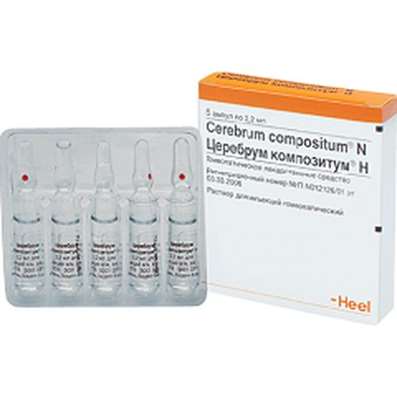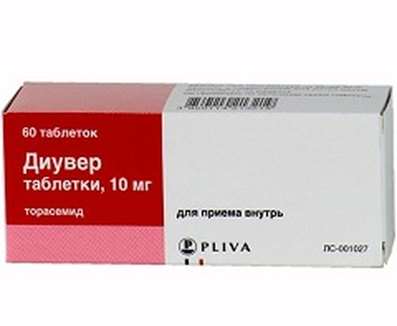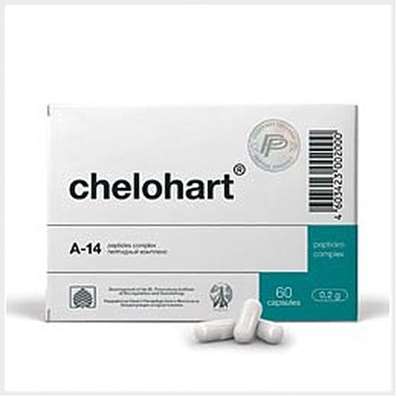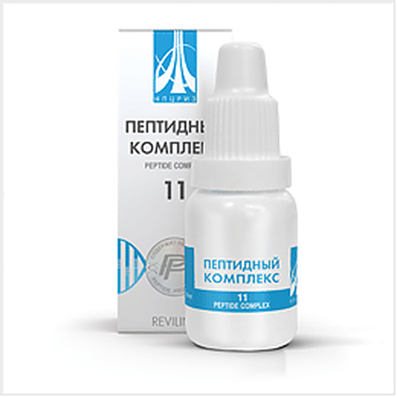Instruction for use: Anaprilin
I want this, give me price
Trade name of the drug – Anaprilin
Dosage Form: tablets
Active substance: Propranololum
ATX
C07AA05 Propranolol
Pharmacotherapeutic group: Beta-blockers
The nosological classification (ICD-10)
E05 Thyrotoxicosis [hyperthyroidism]: Von Basedow's disease; Basedow's disease; hyperthyroidism; Goitre diffuse toxic; Increased thyroid function; tireotoksicski reaction; Toxic diffuse goiter; Toxic goiter; Enlargement of the thyroid gland with symptoms of hyperthyroidism; The phenomenon of iodine Basedow
E05.0 Thyrotoxicosis with diffuse goiter: Goitre diffuse toxic; Toxic goiter; Diffuse thyrotoxic goiter; Graves disease; Diffuse toxic goiter; Goiter Graves; Parry's disease; Flajani disease; Von Basedow's disease; Toxic diffuse goiter
E23.3 pituitary dysfunction, not elsewhere classified: hypothalamic syndrome; Isolated deficiency of adrenocorticotropic hormone (ACTH); diencephalic pathology; diencephalic crisis; diencephalic syndrome; Violation of gonadotropic pituitary function
E27.2 Addison's crisis: Acute adrenal insufficiency; adrenal crisis; Sympathetic-adrenal crises; Acute adrenal insufficiency; Acute adrenocortical insufficiency; Addisonizm
G25.0 Essential tremor: shake; Generalized muscle tremors; Essential tremor family; essential tremor; Tremor idiopathic; Tremor idiopathic benign; Tremor hereditary; Essential tremor is benign
I10 Essential (primary) hypertension: hypertension; Arterial hypertension; Arterial hypertension crisis course; Essential Hypertension; Essential hypertension; Essential hypertension; Essential hypertension; Essential hypertension; Primary hypertension; Arterial hypertension, complications of diabetes; The sudden increase in blood pressure; Hypertensive disorders of blood circulation; hypertensive condition; hypertensive crises; arterial Hypertension; malignant Hypertension; Hypertonic disease; hypertensive crises; accelerated hypertension; malignant hypertension; The aggravation of hypertensive disease; Transient hypertension; Isolated systolic hypertension
I15 Secondary hypertension: Arterial hypertension, complications of diabetes; hypertension; The sudden increase in blood pressure; Hypertensive disorders of blood circulation; hypertensive condition; hypertensive crises; hypertension; arterial Hypertension; malignant Hypertension; hypertensive crises; accelerated hypertension; malignant hypertension; The aggravation of hypertensive disease; Transient hypertension; hypertension; Arterial hypertension; Arterial hypertension crisis course; renovascular hypertension; Hypertension symptomatic; Renal hypertension; Renovascular hypertension; renovascular hypertension; Symptomatic hypertension
I15.0 Renovascular hypertension: hypertensive crisis; renovascular disease; accelerated hypertension; Isolated systolic hypertension
I20 Angina [angina]: Heberden disease; Angina pectoris; The attack of angina pectoris; recurrent angina; Spontaneous angina; Stable angina pectoris; Angina rest; Angina progressing; Angina mixed; Angina spontaneous; stable angina; Chronic stable angina; Angina Syndrome X
I20.0 Unstable angina: heberden disease; Angina pectoris; The attack of angina pectoris; recurrent angina; Spontaneous angina; Stable angina pectoris; Angina rest; Angina progressing; Angina mixed; Angina spontaneous; stable angina; Chronic stable angina; Angina Syndrome X
I47.1 Supraventricular tachycardia: Supraventricular paroxysmal tachycardia; supraventricular tachyarrhythmia; supraventricular tachycardia; Supraventricular arrhythmias; Supraventricular paroxysmal tachycardia; supraventricular tachyarrhythmias; supraventricular tachycardia; Neurogenic sinus tachycardia; orthodromic tachycardia; Paroxysmal supraventricular tachycardia; Paroxysm of supraventricular tachycardia; Paroxysm of supraventricular tachycardia with WPW-syndrome; Paroxysm of atrial tachycardia; Paroxysmal supraventricular tachyarrhythmia; Paroxysmal supraventricular tachycardia; Politopnye atrial tachycardia; Atrial fibrillation; Atrial tachycardia is true; Atrial tachycardia; Atrial tachycardia with AV block; reperfusion arrhythmias; Reflex Bertsolda-Jarisch; Recurrent sustained supraventricular paroxysmal tachycardia; Symptomatic ventricular tachycardia; Sinus tachycardia; Supraventricular paroxysmal tachycardia; supraventricular tachyarrhythmia; supraventricular tachycardia; supraventricular arrhythmia; supraventricular arrhythmias; Tachycardia of AV connections; supraventricular tachycardia; Tachycardia orthodromic; sinus tachycardia; The nodal tachycardia; Chaotic atrial tachycardia politopnye; Wolff-Parkinson-White
I48 Atrial fibrillation and flutter: Permanent atrial tachyarrhythmias; Relief frequent ventricular rate during atrial flutter or blink; atrial fibrillation; Paroxysm of atrial fibrillation and flutter; Paroxysm of atrial fibrillation; Paroxysmal atrial fibrillation; Atrial premature beats; Tahiaritmicheskoy atrial fibrillation; Tahisistolicheskoy atrial fibrillation; auricular flutter; Life-threatening ventricular fibrillation; Atrial fibrillation; Chronic atrial fibrillation; supraventricular arrhythmia; Paroxysmal atrial fibrillation and flutter; Paroxysmal fibrilloflutter; Atrial premature beats
I49.1 Premature atrial depolarization: supraventricular arrhythmia; supraventricular arrhythmia; supraventricular arrhythmias; supraventricular arrhythmias; supraventricular arrhythmias; supraventricular beats; atrial premature beats
Z100 * CLASS XXII Surgical practice: Abdominal surgery; adenomectomy; Amputation; Coronary angioplasty; Angioplasty of the carotid arteries; Antiseptic skin treatment for wounds; Antiseptic Hand; Appendectomy; atherectomy; Balloon coronary angioplasty; Vaginal hysterectomy; The coronary bypass; Interventions in the vagina and cervix; Interventions on the bladder; Intervention in the mouth; Restoration and reconstructive surgery; Hand hygiene of medical personnel; Gynecologic surgery; Gynecological intervention; Gynecological surgery; Hypovolemic shock during operations; Disinfection of purulent wounds; Disinfection of wounds edges; Diagnostic intervention; Diagnostic procedures; Cervical Diathermocoagulation; Long-surgery; Replacing the fistula catheters; Infection in orthopedic surgery; Artificial heart valve; cystectomy; Short-term outpatient surgery; Short-term operation; Short surgical procedures; Krikotireotomiya; Blood loss during surgery; Bleeding during surgery and in the postoperative period; Kuldotsentez; laser photocoagulation; laser coagulation; retinal laser coagulation; Laparoscopy; Laparoscopy in Gynecology; CSF fistula; Small gynecological operations; Small surgical procedures; Mastectomy and subsequent plastic; mediastinotomy; Microsurgical operations on the ear; Mukogingivalnye operation; suturing; Minor surgery; neurosurgical operation; Immobilization of the eyeball in ophthalmic surgery; testectomy; pancreatectomy; Perikardektomiya; The period of rehabilitation after surgery; The period of convalescence after surgery; Percutaneous transluminal coronary angioplasty; Pleural thoracentesis; Pneumonia postoperative and posttraumatic; Preparation for surgical procedures; Preparation for surgery; Preparation of the surgeon's hands before surgery; Preparation of the colon for surgical procedures; Postoperative aspiration pneumonia in neurosurgical and thoracic surgery; Postoperative nausea; Postoperative bleeding; postoperative granuloma; postoperative shock; The early postoperative period; myocardial revascularization; Radiectomy; gastric Resection; bowel resection; uterine Resection; liver Resection; enterectomy; Resection of part of the stomach; Reocclusion of the operated vessel; Bonding tissues during surgical procedures; Removal of sutures; Condition after eye surgery; Condition after surgery; Condition after surgery in the nasal cavity; Condition after gastrectomy; Status after resection of the small intestine; Condition after tonsillectomy; Condition after removal of the duodenum; Condition after phlebectomy; Vascular surgery; Splenectomy; Sterilization of surgical instruments; Sterilization of surgical instruments; sternotomy; Dental surgery; Dental intervention in periodontal tissues; strumectomy; Tonsillectomy; Thoracic surgery; Thoracic surgery; total gastrectomy; Transdermal intravascular coronary angioplasty; Transurethral resection; Turbinektomiya; Removal of a tooth; cataract surgery; Removal of cysts; tonsillectomy; Removal of fibroids; Removing the mobile primary teeth; Removing polyps; Removing broken tooth; Removal of the uterus body; Removal of sutures; Fistula likvoroprovodyaschih ways; Frontoetmoidogaymorotomiya; Surgical infection; Surgical treatment of chronic limb ulcers; Surgery; The surgery in the anal area; The surgery on the colon; Surgical practice; The surgical procedure; Surgical interventions; Surgery on the gastrointestinal tract; Surgical procedures on the urinary tract; Surgical procedures on the urinary system; Surgical intervention of the genitourinary system; Surgical procedures on the heart; Surgical manipulation; surgery; Surgery on the veins; Surgical intervention; Vascular surgery; Surgical treatment of thrombosis; Surgery; cholecystectomy; Partial gastric resection; hysterectomy; Percutaneous transluminal coronary angioplasty; Percutaneous transluminal angioplasty; Coronary artery bypass; tooth Extirpation; Extirpation of milk teeth; pulpectomy; pulsative cardiopulmonary bypass; tooth Extraction; teeth Extraction; cataract extraction; Electrocoagulation; endourological intervention; episiotomy; Etmoidotomiya; Complications after tooth extraction
Composition (per tablet):
Propranolol l10 mg, 40 mg
auxiliary substances: milk sugar; talc; potato starch; calcium stearate
in blisters of 10 pcs .; In the paper cartons 5 packages or in banks orange glass 50 pcs .; In the paper cartons 1 bank.
Description
White Valium tablets with a facet and Valium, or without risks.
Characteristic
Nonselective beta-blockers.
Pharmacological Properties of Anaprilin
Pharmachologic effect - antianginal, antihypertensive, anti-arrhythmic.
Pharmacodynamics
Decreases automaticity of the sinus node, the excitability of the myocardium, the occurrence of ectopic foci of excitation; has a membrane-stabilizing effect, slows heart rate slows AV conduction, myocardial contractility and reduces myocardial oxygen demand.
It has hypotensive effect, which is stabilized by the end of the 2nd week of the course destination. It reduces the activity of the renin-angiotensin system. It increases blood atherogenic properties.
Increases uterine contractions (spontaneous and induced a means of stimulating the myometrium), which helps to reduce bleeding during childbirth and in the postoperative period.
Increases tone of the bronchi, in large doses cause sedation.
Lowers intraocular pressure by inhibiting production of aqueous humor in the chamber of the eye, does not affect the size of the pupil and accommodation.
Pharmacokinetics
Quickly absorbed by ingestion and relatively rapidly excreted from the body. Cmax plasma levels achieved in 1-1.5 hours bioavailability after oral administration -. 30% (the effect of "first pass" through the liver microsomal oxidation), increase after administration after meals. T1 / 2 - 2-3 hours Linking blood plasma proteins -. 90-95%. It penetrates through the placental barrier. Excretion by the kidneys - 90%, in an unmodified form - less than 1%.
Indications of Anaprilin
arterial hypertension;
exertional angina, unstable angina;
sinus tachycardia (including hyperthyroidism);
supraventricular tachycardia;
tachysystolic atrial fibrillation;
supraventricular and ventricular premature beats;
essential tremor;
sympathadrenalic crises against the backdrop of diencephalic syndrome;
cardiovascular disorders in diffuse toxic goiter;
preoperative preparation of patients with thyrotoxic goiter, cannot tolerate thyreostatics PM;
prevention of migraine attacks.
Contraindications
hypersensitivity;
AV blockade II-III Article .;
sinoatrial block;
sinus bradycardia (heart rate <55 beats / min.);
syndrome sick sinus;
hypotension;
heart failure II B-III century .;
congestive heart failure;
acute myocardial infarction;
vasomotor rhinitis;
obliterative arterial diseases (including Raynaud's disease);
metabolic acidosis;
bronchial asthma;
tendency to bronchospastic reactions;
diabetes;
pregnancy.
Pregnancy and breast-feeding
Contraindicated.
Side effect
There may be: bradycardia, AV block, bronchospasm, heart failure, muscle weakness, fatigue, pain in the epigastric region.
Rarely - headache, sleeplessness, nightmares, asthenic syndrome, decreased ability to rapid mental and motor reactions, agitation, depression, paresthesia, cold extremities, nausea, diarrhea, constipation, allergic skin reactions, exacerbation of psoriasis, hypoglycemia (in patients with insulin-dependent diabetes), hyperglycemia (in patients with non-insulin dependent diabetes mellitus), impaired vision, peripheral arterial spasm.
Interaction
Incompatible with antipsychotics and anxiolytics.
A few days prior to anesthesia with chloroform or ether is necessary to stop taking the drug.
Against the background of treatment with propranolol should be avoided in / in the introduction of verapamil, diltiazem.
Enhanced hypotensive effect of propranolol in combination with hydrochlorothiazide, reserpine, hydralazine and other antihypertensive drugs, as well as ethanol.
It increases the thyreostatic drugs and uterotoniziruyuschih; reduces the effect of antihistamines.
With caution in conjunction with hypoglycemic agents.
Dosage and Administration
Inside (regardless of meal times). When hypertension - 40 mg 2 times a day; expression in low hypotensive effect dose increased to 40 mg three times or 80 mg 2 times a day. The maximum daily dose - 320 mg (in exceptional cases - 640 mg).
When angina, heart rhythm disturbances - at an initial dose of 20 mg 3 times a day; then gradually increase the dose to 80-120 mg per reception 2-3; the maximum daily dose - 240 mg.
For the prevention of migraine, as well as essential tremor - at an initial dose of 40 mg 2-3 times a day; if necessary, the dose is gradually increased up to 160 mg / day.
Special instructions
Discontinuation of treatment is carried out gradually under medical supervision, as abrupt withdrawal may intensify myocardial ischemia and worsen exercise capacity.
In patients with diabetes drug application is performed under the control of blood glucose.
Do not use concurrently with antipsychotic drugs (neuroleptics) and tranquilizers.
Note that when receiving propranolol may weaken attention and decrease the speed of motor responses.
During treatment is not recommended to take ethanol (perhaps a sharp decrease in blood pressure).
Storage conditions of Anaprilin
In a dry, dark place.
Keep out of the reach of children.
Shelf life
4 years.
Do not use beyond the expiration date printed on the package.

 Cart
Cart





